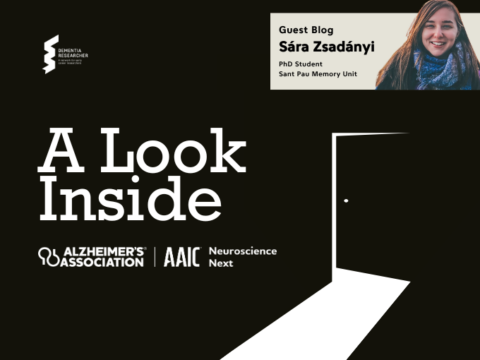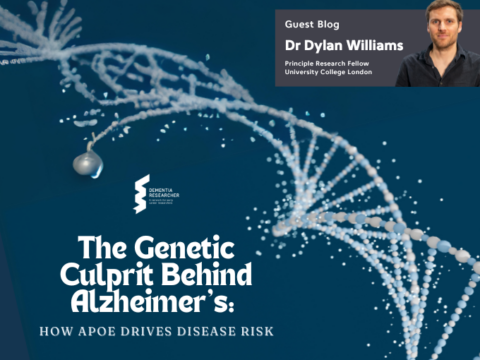Experiencing a traumatic brain injury (TBI) is the strongest modifiable risk factor for developing dementia, but we don’t know what happens in the brain after injury that makes someone more vulnerable to developing a neurodegenerative disease that ultimately leads to dementia. In this blog, I’m going to be introducing you to my research area, and asking the question: why does brain injury increase the risk of dementia?
To understand what a TBI actually is, it’s probably best to first go over some terms. Following a head trauma, the level of consciousness can be assessed using the Glasgow Coma Scale (GCS) which is a commonly used scoring method which measures eye, verbal, and motor function. The GCS score gives an indication of the level of TBI severity, which ranges from mild (also known as concussion), to moderate, and then to severe. A single TBI might occur because of an accident or assault for example and can vary in terms of severity. Head injury in sport has been receiving a lot of media attention recently and can be a useful context to help us understand the effects of mild repetitive TBI, which can occur from experiencing multiple concussions in some contact sports, or from repetitive impacts from heading a football throughout a player’s career, for example.
Now we’ve established the different types and severities of TBI, let’s try and understand why it is a risk factor for dementia. TBI is known as a modifiable risk factor, which means that it is considered to be a risk which can be potentially controlled and minimised, just like the other 11 modifiable risk factors which were outlined in the Lancet Commission on dementia prevention, intervention, and care updated last year, and which also includes, for example smoking, physical inactivity, and hypertension. This is in contrast to risk factors such as genetics and ageing, which are non-modifiable. Therefore, the key to understanding dementia risk is to minimise the modifiable risk factors as much as possible, which includes potential exposure to head injury.

Chronic traumatic encephalopathy (CTE) is a progressive and fatal brain disease associated with repeated traumatic brain injuries (TBIs), including concussions and repeated blows to the head. It is also associated with the development of dementia.
To explore why TBI increases the risk of dementia, we need to ask the question whether the risk for some dementia-related neurodegenerative diseases is greater than others. The neurodegenerative disease chronic traumatic encephalopathy (CTE) has for a long time been associated with experiencing multiple head impacts, with researchers first describing the range of associated pathologies in former boxers. However, in the last 20 years, CTE has also been reported in other former contact sport athletes, from football, rugby, and American football most notably. So CTE is a neurodegenerative disease which results in dementia, but is it exclusive to athletes who may have been exposed to repetitive head impacts or concussions throughout their careers? Not quite. Research has shown that CTE can result from different types of TBI exposures, which means it is not exclusively a result of repetitive head impacts that may be typically associated with contact sports. We also know that CTE is not the only dementia-related brain disease that is associated with TBI, as the risk of Alzheimer’s disease (AD) and Lewy Body Dementia, for example, are also increased following brain injury. Clinically, CTE and AD might look quite similar in terms of how the dementia symptoms present, which makes CTE difficult to diagnose in life. In fact, there is currently no consensus criteria for clinically diagnosing CTE, and it is only through examining brain pathology post-mortem that we can establish what might be the primary pathology driving the dementia syndrome. For both CTE and AD, we see an accumulation of certain proteins in the brain, and it is the pattern and distribution of these pathologies that allows us to distinguish between these two neurodegenerative diseases.
We’ve established that TBI, whether it is single or repetitive head impacts, increases the risk of dementia-related neurodegenerative diseases more broadly, not just CTE. But we still haven’t answered the question ‘why does brain injury increase the risk of dementia?’ To answer the question, it might be helpful to imagine the ‘black box’ metaphor, where the ‘inputs’ and the ‘outputs’ of a system are known, but how the actual system works is unknown. We can imagine brain injury as the input and neurodegenerative disease pathology as the potential output. The black box in between the input and the output represents the life-long neuropathological changes which occur in brain injury survivors if they go on to develop dementia. Our aim is to try and work out what is happening in that black box, as therein lies the answer to our question of why, and how, brain injury increases the risk of dementia. To give you an insight into the steady progress we’re making in trying to answer this question, from previous research we know that the part of brain cells which carry electrical impulses, the axons, become damaged after TBI across all severities, and amyloid precursor protein may accumulate in these axons ultimately resulting in the β-amyloid plaques which are characteristic of some neurodegenerative diseases like AD and CTE.
My interest is specifically in how neuroinflammation might be the driver of neurodegeneration following TBI exposure. Microglia are immune cells in the brain with a diverse and dynamic range of functions, and they are activated as part of the neuroinflammatory response. I am investigating whether chronic activation of microglia after brain injury leads to the progression of neurodegenerative disease pathology. If there is a link between neuroinflammation and other pathological changes following TBI we will not only be able to identify therapeutic targets which will minimise brain injury as a risk factor for dementia but we will also have greater insight into the processes involved in the development and progression of dementia-related neurodegenerative diseases that are not linked to a history of TBI.

Dr Kamar Ameen-Al
Author
Dr Kamar Ameen-Ali is a Research Associate at University of Glasgow, exploring how neuroinflammation following traumatic brain injury contributes to the progression of neurodegenerative diseases that lead to dementia. Having first pursued a career as an NHS Psychologist, Kamar went back to University in Durham to look at rodent behavioural tasks to completed her PhD, and then worked as a regional Programme Manager for NC3Rs. Kamar brings a wealth of experience and writes on a range of topics from her time in the NHS, working for a Research Funder and from her work and life in the lab.

 Print This Post
Print This Post




